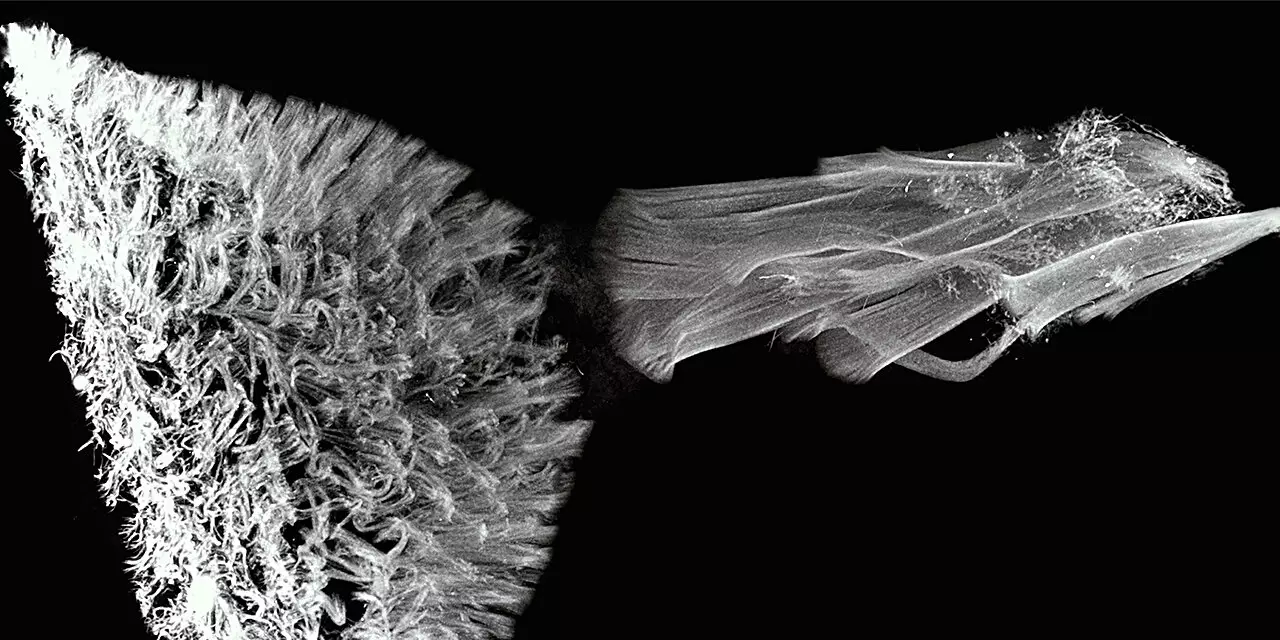In the ever-evolving realm of scientific discovery, the concept of paradigm shifts drives our understanding of the natural world. The Kanso Bioinspired Motion Lab at USC’s Viterbi School of Engineering stands at the forefront of this evolution, consistently challenging conventional wisdom. With their latest paper published in the esteemed journal *Nature Physics*, their exploration into the mechanics of how living organisms pump fluids unveils critical insights that not only inform evolutionary biology but also offer promising avenues for biomedical applications.
The Mechanics of Cilia: More Than Just Structure
At the core of their research lies a captivating examination of ciliated organs—those specialized structures found in species ranging from humans to various aquatic organisms. Traditionally, scientists have categorized these organs based on two primary models: the “flame” model and the “carpet” model. The former features elongated cilia that rhythmically beat along a narrow pathway, while the latter manifests as a layered array of short, dense cilia arranged perpendicularly to the epithelial surface. This dichotomy suggested unique evolutionary pathways, positioning carpets and flames as vastly different adaptations to fluid dynamics. However, Kanso and her team challenge this rigid classification by highlighting that these physical forms are fundamentally dictated by the specific requirements of fluid movement, suggesting a powerful principle: form indeed follows function.
Bridging the Gap: A Unifying Theory
Anchoring their findings in empirical research and mathematical modeling, Kanso’s lab introduces a revolutionary perspective that bridges the traditional divide. They propose a continuum between the ciliary designs, arguing that varying structural parameters—specifically lumen diameter and cilia-to-lumen ratio—create a scalable spectrum of ciliated duct functionalities. This unification of models allows researchers and medical professionals to better understand systems ranging from the human respiratory tract to more specialized organs in other species. By framing the relationship between ciliary structure and fluid dynamics as a gradient rather than a binary choice, the research heralds a new era of scientific inquiry that transcends surface-level observations.
Implications for Biomedical Science: A New Avenue for Treatment
The consequences of this groundbreaking research extend beyond theoretical frameworks, delving into tangible implications for health and medicine. Chronic conditions associated with ciliary dysfunction, such as bronchiectasis and hydrocephalus, can be better understood in light of these fluid dynamics principles. By employing the newly identified design rules for ciliary pumps, healthcare professionals are poised to enhance their diagnoses and treatment protocols, ultimately improving patient outcomes. For instance, the connection of ciliary flame models to kidney function provides a novel perspective on renal diseases, signifying that Kanso’s findings could serve as a roadmap for innovative therapeutic strategies.
Revisiting Scientific Challenges: Overcoming Traditional Barriers
One of the primary hurdles in this area of research has been the difficulty associated with measuring ciliary motion and fluid flow in live organisms. Kanso’s lab not only acknowledges these challenges but embraces them, barreling into experimental and mathematical approaches that offer fresh insights. Their commitment to blending empirical experimentation with theoretical modeling helps break down the barriers that have traditionally confined scientists to observing these phenomena in isolation. The innovative framework developed by Kanso’s team demonstrates the power of interdisciplinary collaboration and the potential for profound discoveries when different academic fields intersect.
This research not only sheds light on the intricate designs of ciliated organs but also sparks curiosity about the broader implications within the domains of biology and engineering. The revelations made by Kanso and her team are set to redefine our understanding of biological systems and their evolutionary histories. Embracing the concept of continuity over binary distinctions, the research has opened doors to new scientific inquiries, paving the way for further investigation into the elegant mechanics of life itself. As more researchers adopt this progressive framework, science may very well find itself in the midst of yet another paradigm shift—one that celebrates the beautiful complexity of biological forms and their functions.


Leave a Reply